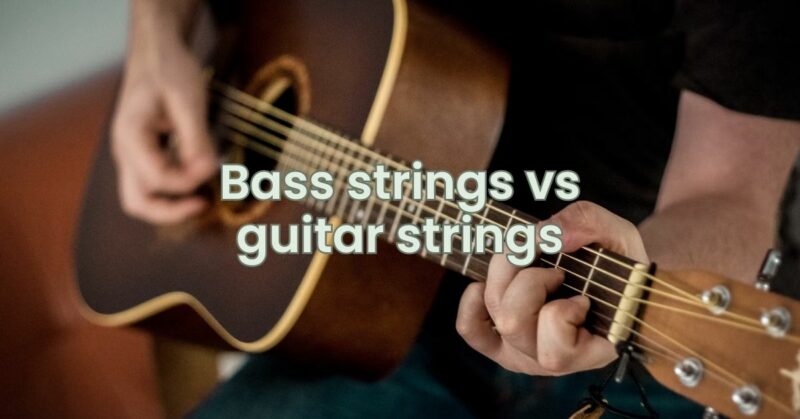In the world of music, strings are the threads that weave melodies, harmonies, and rhythms together. While both bass and guitar strings play pivotal roles in shaping the sonic landscape, they possess unique characteristics that cater to their respective instruments. The comparison between bass strings and guitar strings delves into the nuanced differences in sound, construction, and playability that define these essential components. In this article, we’ll explore the contrasts and similarities between bass strings and guitar strings, shedding light on how they contribute to the art of music-making.
Sound and Sonic Roles
Bass Strings: Bass strings are the foundation of rhythm and groove in a band. They generate deep, low-frequency tones that provide the harmonic and rhythmic framework for other instruments to build upon. The thickness and tension of bass strings create a resonant foundation that adds body and depth to the overall sound.
Guitar Strings: Guitar strings cover a wider tonal spectrum, spanning from the low-end warmth to the shimmering highs. They contribute to melody, chords, and intricate picking patterns, offering a versatile canvas for sonic expression. The variation in string gauge and material allows for a diverse range of tonal possibilities.
String Construction and Gauge
Bass Strings: Bass strings are typically thicker and longer than guitar strings due to the lower pitch and larger scale length of bass instruments. The strings may be wound with metal to enhance the resonance and projection of the low frequencies. The gauge of bass strings affects the tension and tonal characteristics, with lighter gauges providing more flexibility and brighter tones, and heavier gauges delivering more punch and sustain.
Guitar Strings: Guitar strings come in various gauges, catering to different playing styles and tonal preferences. Electric guitar strings often use a combination of plain steel and wound strings, allowing for a balance between brightness and warmth. Acoustic guitar strings may be entirely wound or include plain steel strings, offering different tonal textures for strumming and fingerstyle playing.
Playability and Technique
Bass Strings: Bass strings require greater finger strength due to their thickness and tension. Bass players use techniques like plucking, popping, and slapping to create rhythmic and melodic patterns. The spacing between the strings allows for fingerstyle playing that emphasizes groove and rhythm.
Guitar Strings: Guitar strings offer more versatility in terms of playing techniques, including strumming, fingerpicking, tapping, and bending. The lighter gauge of guitar strings makes them more responsive to subtle finger movements, facilitating expressive playing styles.
Tonal Nuances and Expressiveness
Bass Strings: Bass strings excel in producing powerful low frequencies that anchor the rhythm section. The resonance and sustain of bass strings contribute to the groove and provide a solid foundation for the entire band. The variations in gauge and winding materials allow bassists to shape their desired tone, whether it’s a smooth and rounded sound or a bright and punchy presence.
Guitar Strings: Guitar strings offer a wide tonal palette that suits various musical genres. The ability to bend, slide, and execute intricate techniques allows guitarists to convey emotions and stories through their playing. The interaction between guitar strings and pickups adds an additional layer of expressiveness, allowing players to control the dynamics and timbre of their sound.
Conclusion
The comparison between bass strings and guitar strings highlights the distinct roles they play in music creation. While both strings contribute to the melodic and rhythmic fabric of a composition, their unique characteristics cater to the sonic demands of their respective instruments. Whether it’s the resonant depth of bass strings or the versatile tonal range of guitar strings, both are integral to the symphony of harmonies and rhythms that form the backbone of musical expression.

